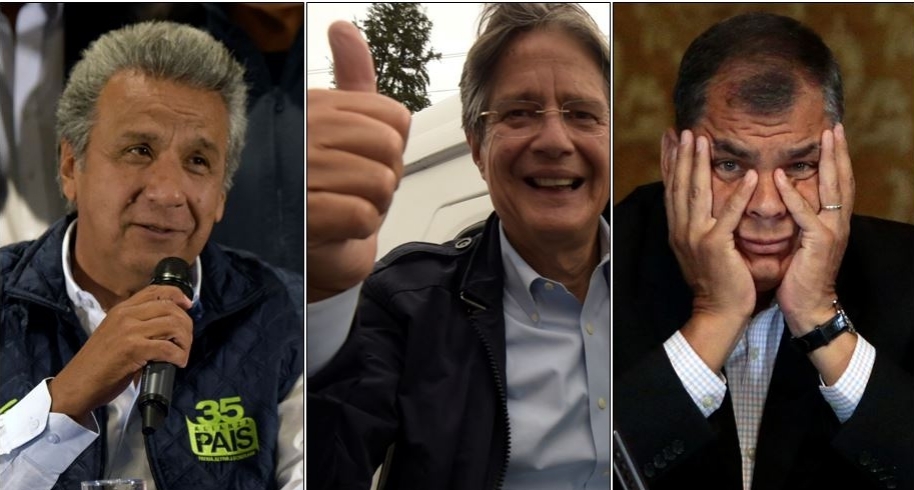Over the years, a series of events and decisions taken by successive governments in Ecuador, coupled with changes in the international landscape, have paved the way for the growth of organized crime and escalating violence in the country.
From bombings to prison massacres, targeted killings to arson attacks, the grim reality of violence has become more frequent in Ecuador, prompting the government to declare multiple ‘states of exception’ in response.
Academic and security experts María Fernanda Noboa and Luis Córdova say there were eight pivotal moments that contributed to the expansion of organized crime in Ecuador.
They offered the following historical context and policy decisions that they say led to this unfortunate situation:
The Signing of the Peace Agreement with Peru (1998) – The signing of the peace agreement with neighboring Peru in 1998 marked a turning point for Ecuador. While it brought express benefits, it also ended the perceived threats that gave the Armed Forces its raison d’être. Subsequently, the institution sought ways to maintain its validity and budget, and its focus shifted to the northern border, where Colombia was grappling with its internal conflict.
Plan Colombia and the Colombian Conflict – In 1998, Colombian President Andrés Pastrana introduced Plan Colombia, a strategic initiative to end the armed conflict and tackle drug trafficking. With the failure of peace negotiations between the Colombian government and the FARC, the subsequent rise of Álvaro Uribe to power led to a change in Colombia’s security strategy. Uribe’s Patriot Plan portrayed the guerrilla groups as terrorist threats, leading to the militarization of the conflict.
Permeation of the Terrorism Discourse in Ecuador (2004) – The growing discourse on terrorism in Colombia began to influence Ecuador’s security perspective around 2004. Although the northern border had been relatively peaceful in terms of Colombian guerrillas, the Ecuadorian State demanded increased control of the border by Colombia, leading to a strengthening of the Armed Forces.
Rafael Correa’s Presidency and a Shift in Strategy – With Rafael Correa’s assumption of power, Ecuador’s view of Colombian guerrilla groups shifted. They were no longer seen as terrorists, and the pressure from the United States diminished, resulting in the closure of the controversial Manta base. Tacit agreements between the Correa government and the FARC allowed criminal structures and economies to operate within the country, contributing to their growth and expansion.
Geopolitical Changes in the Cocaine Market – The signing of the peace agreement with the FARC and demobilization processes caused a shift in the cocaine market’s dynamics. The power vacuum left by the demobilization led to the multiplication of criminal organizations dedicated to the cocaine business in both Colombia and Ecuador. This scenario also attracted other mafias, such as the Albanian one, to explore opportunities in Ecuador.
A Surprising State Turn and Breaking of Protection Networks – Lenín Moreno’s presidency, following Correa’s, brought changes to the security sector authorities, which disrupted the protection networks that had supported illegal businesses. Operations to uncover arms trafficking networks with links to the Colombian Oliver Sinisterra Front exposed vulnerabilities within the system.
The COVID-19 Pandemic’s Double Impact – The COVID-19 pandemic not only changed the global drug market’s dynamics but also caused an unprecedented economic crisis. The demand for cocaine and narcotics shifted, leading Mexican cartels to seek Ecuadorian involvement in their business. Ecuador transformed from a transit country to a collection center, exporter, and even a producer of drugs. Concurrently, austerity measures by the Moreno government weakened institutional capabilities, making the state vulnerable to crime.
Guillermo Lasso’s Failed Approach and Ongoing Challenges – Guillermo Lasso’s attempt to declare war on drugs faced numerous challenges. The failure to carry out institutional reform and the rejection of the intention to extradite members of organized crime hindered the government’s strategy. The lack of public policies to address the health problem separately from organized crime further exacerbated the issue. Meanwhile, the militarization of the security problem increased competition between the State and criminal groups for superior weapons and technology, diverting resources from social investment.
Noboa and Córdova feel that the expansion of organized crime in Ecuador is a complex issue rooted in historical events and policy decisions, and that addressing this problem necessitates a multifaceted approach that targets the root causes, focuses on social investment, and develops comprehensive strategies to combat drug trafficking and violence.
In their words, “failure to do so risks further exacerbating the spiral of violence that the country is experiencing.”


0 Comments